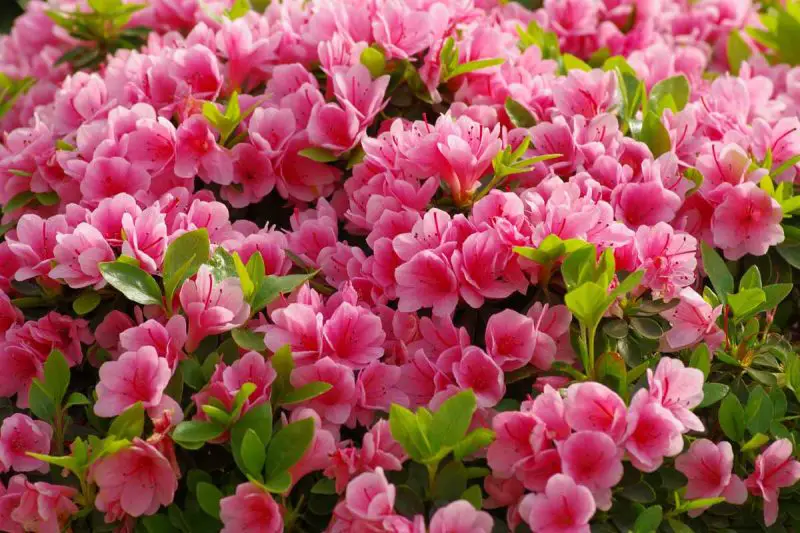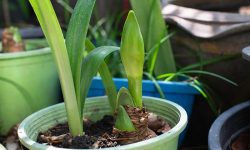Introduction
Azalea bushes are among the most cherished flowering shrubs in ornamental gardening. Known for their vibrant blooms, lush foliage, and compact form, azaleas add vivid color and structure to landscapes. Whether grown as standalone specimens, borders, or part of a woodland garden, they captivate with their spring or early summer display. However, to achieve their full potential, azaleas require specific care that goes beyond the basics of watering and pruning. This guide offers comprehensive, expert-backed insights into caring for azalea bushes to promote lush growth, long-lasting blooms, and overall plant vitality.

Understanding Azalea Varieties
Before diving into care instructions, it’s important to distinguish between the two main categories of azaleas—deciduous and evergreen. Both have unique needs and characteristics that influence how they should be cared for.
Deciduous Azaleas
These azaleas shed their leaves in the fall and typically produce bright, fragrant flowers in late spring. They tend to be hardier and more tolerant of colder climates, making them suitable for a wider range of USDA zones.
Evergreen Azaleas
As the name suggests, evergreen azaleas retain their leaves year-round and bloom in spring, often with smaller but denser clusters of flowers. These are popular in temperate regions and often used in traditional Japanese gardens for their year-round foliage appeal.
Choosing the Right Location
Azaleas thrive in partial shade and well-drained, acidic soil. Finding the right location for planting is crucial to ensure they remain healthy and bloom abundantly.
Importance of Light
While azaleas enjoy some sunlight, too much direct sun can scorch their leaves, while too little can lead to poor flowering. Morning sun followed by afternoon shade is ideal. In hotter climates, filtered light or dappled shade under tall trees helps protect the plant.
Soil Requirements
Azaleas need acidic soil with a pH range between 4.5 and 6.0. Soil should be rich in organic matter, well-aerated, and moist but not soggy. Heavy clay or alkaline soils should be amended with peat moss, composted pine bark, or sulfur to adjust pH and improve drainage.
Planting Azalea Bushes
The success of an azalea starts with proper planting techniques, whether you are adding a new bush or relocating an existing one.
When to Plant
The best time to plant azaleas is during early spring or early fall, when the weather is mild and allows roots to establish before the heat of summer or cold of winter sets in.
How to Plant
Dig a hole twice as wide but no deeper than the root ball. Place the bush so the top of the root ball is slightly above ground level. Backfill with amended soil, press gently to eliminate air pockets, and water thoroughly.
Watering Azaleas the Right Way
Consistent watering is critical for azalea health, especially during the growing season.
Watering Frequency
Azaleas prefer consistently moist soil. Water deeply once or twice a week rather than shallow, frequent watering. Newly planted azaleas may need more frequent attention until established.
Avoiding Overwatering
While azaleas need moisture, overly wet conditions can lead to root rot. Ensure proper drainage and avoid planting in areas where water tends to collect.
Fertilizing for Healthy Growth
Feeding azaleas supports their foliage growth and flower production.
When and How to Fertilize
Use a fertilizer formulated for acid-loving plants, applying it in early spring before new growth begins. A second application can be made in late spring after the bloom cycle ends. Avoid fertilizing late in the season, as this can stimulate tender growth that is vulnerable to frost damage.
Organic Options
Compost, well-rotted manure, and mulched pine needles are excellent organic alternatives. They enrich the soil and promote beneficial microbial activity, helping azaleas thrive naturally.
Mulching for Moisture Retention and Weed Control
A mulch layer helps retain soil moisture, suppress weeds, and regulate temperature around the roots.
Best Mulching Materials
Pine bark, pine needles, or shredded hardwood mulch are ideal. Apply a 2–3 inch layer around the base of the plant, leaving some space around the stem to prevent rot.
Pruning Azaleas for Shape and Blooms
Pruning not only enhances the aesthetic appeal of azaleas but also encourages better flowering.
When to Prune
Prune azaleas right after they finish blooming in spring. This timing prevents the removal of next year’s flower buds, which form during the summer months.
How to Prune
Remove dead or diseased branches, thin out crowded areas, and trim lightly to maintain the plant’s shape. Avoid heavy cutting unless rejuvenating an old or neglected plant, in which case prune back severely and allow time for recovery.
Managing Common Azalea Problems
Azaleas can suffer from several issues if not properly cared for, including pests, diseases, and environmental stress.
Pest Issues
Azaleas may be targeted by lace bugs, spider mites, and azalea caterpillars. Regular inspection and use of insecticidal soap or neem oil can help control infestations.
Disease Prevention
Root rot, petal blight, and powdery mildew are common fungal diseases. These can be minimized by maintaining good air circulation, avoiding overhead watering, and planting in well-drained soil.
Yellowing Leaves
Yellow leaves may indicate chlorosis, often due to alkaline soil or iron deficiency. Apply iron supplements and amend the soil to restore pH balance.
Winter Protection for Azaleas
In colder regions, winter care is essential for protecting azaleas from frost and wind damage.
Mulch and Cover
Apply extra mulch around the base in late fall to insulate roots. In extreme cold, consider covering plants with burlap or frost cloth to shield them from harsh winter winds.
Propagating Azaleas
If you wish to expand your azalea collection, propagation can be achieved through cuttings or layering.
Softwood Cuttings
Take 4–6 inch cuttings in late spring or early summer. Dip in rooting hormone and plant in moist, sterile medium. Keep humid and warm until roots develop.
Layering
Bend a low branch to the ground, nick it slightly, and cover it with soil while keeping the tip exposed. Roots should form within several months, after which the new plant can be separated.
Frequently Asked Questions (FAQ)
What is the best time to prune azaleas?
The ideal time to prune azaleas is right after they finish blooming, typically in late spring or early summer. Pruning later in the year can remove the buds for next season’s flowers.
How often should I water my azalea bush?
Water azaleas deeply when the top inch of soil is dry. Newly planted bushes may need watering two to three times per week, while established ones may need less frequent watering depending on rainfall.
Can azaleas grow in full sun?
Azaleas prefer partial shade or filtered sunlight. In full sun, they may suffer from leaf scorch and reduced blooming. However, some varieties can tolerate more sun if they receive adequate water and mulch.
Do azaleas need special fertilizer?
Yes, azaleas benefit from fertilizers formulated for acid-loving plants. Use balanced or slightly acidic fertilizers applied in early spring and, if needed, again in early summer.
Why are my azalea leaves turning yellow?
Yellow leaves can indicate poor drainage, overwatering, or nutrient deficiencies, especially a lack of iron or improper pH. Check soil conditions and adjust watering or fertilization as needed.
Conclusion
Caring for azalea bushes doesn’t have to be difficult. With proper planting, consistent watering, seasonal pruning, and protection against pests and harsh weather, your azaleas can thrive and provide lush, vibrant blooms year after year. Whether in a shaded corner or along a blooming hedge, azaleas are an outstanding addition to any garden.






